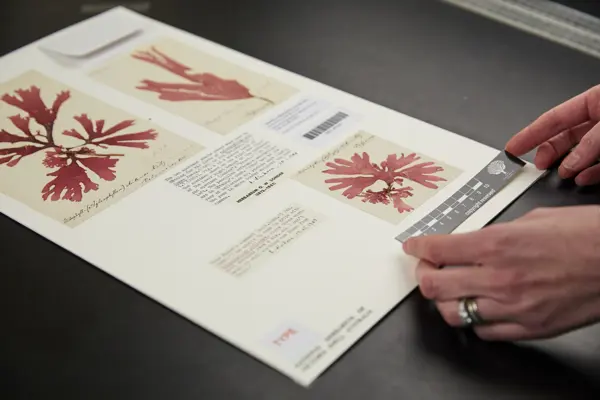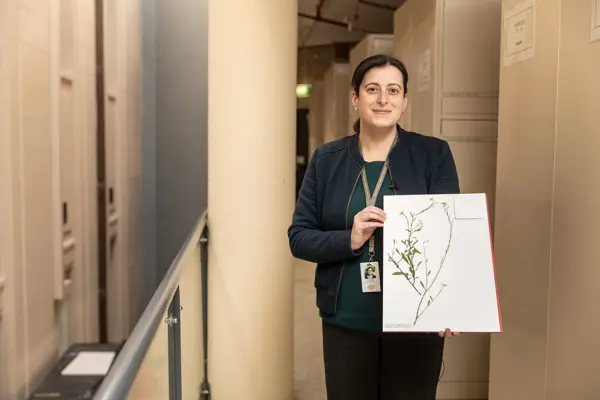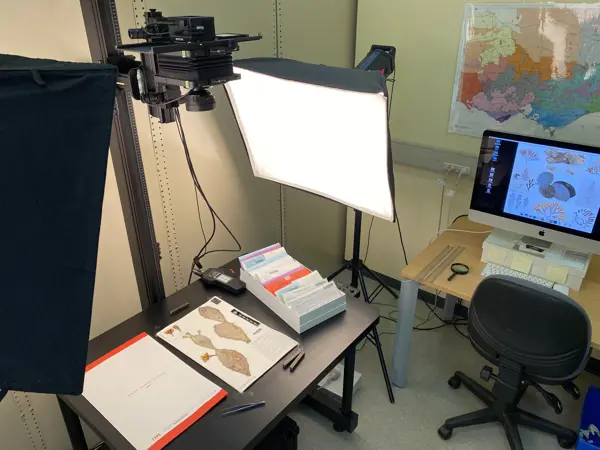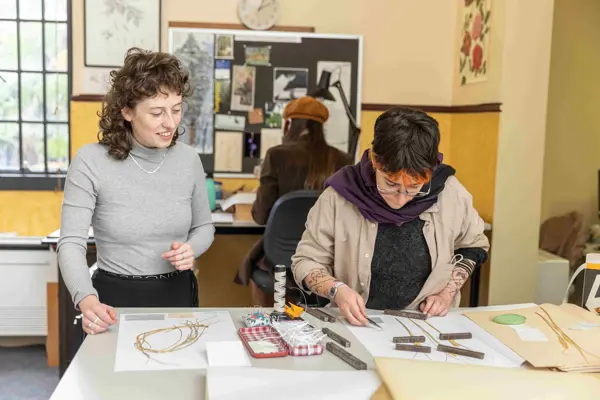
Caring for the collection
When carefully preserved and cared for, herbarium specimens can last for centuries. As custodians of this extraordinary scientific cultural collection, the Herbarium’s curation staff are responsible for ensuring the collection can be accessed by researchers today, tomorrow, and well into the future.
We not only make sure specimens are stored appropriately and protected from damage, but we also reduce the need to handle them by making collecting data and specimen images available to researchers.
Learn more about the work of our dedicated curation staff below
Cataloguing the collection
A crucial component of a herbarium specimen is information on where and when the plant, alga or fungus was collected, and who collected it. Ideally, a collector will also record information on the habitat, associated species, abundance and appearance of the living organism to give researchers a more complete picture of its environment.
Since the early 1990s, we have been unlocking this valuable scientific data to make it more easily accessible for research. To date, approximately 90% of our Australian collection and about 25% of our non-Australian specimens have been catalogued.
Learn more about how we catalogue the collection below.

Herbarium staff recently reached a momentous milestone, with the cataloguing of our one-millionth specimen. As excited colleagues cheered her on, treasured Database Officer Rita Macheda had the honour of cataloguing a specimen of a rare member of the mustard family, Irenepharsis magicus, that was collected by RBGV botanists in March 2021.

Imaging the collection
Since 2011 we have been progressively digitising our collection by capturing high-resolution images of herbarium specimens. The images are made available online via the Australasian Virtual Herbarium and JSTOR Global Plants. Imaging specimens provides a range of benefits including:
- Providing a visual inventory of the collection
- Reducing the need to handle the specimens for research and curation purposes
- Reducing the need to send specimens on loan to researchers
- Providing a digital back-up of the specimen in case the physical specimen is lost or damaged
- Making it easier to visually showcase the herbarium to researchers and the public
- Allowing virtual repatriation of specimen images to their countries of origin.
Our specimen imaging has so far focused on type specimens and other high priority specimens. We have completed imaging of all known type specimens of Australian plants, and all known type specimens of Australian and non-Australian fungi, lichen and algae.
Learn more about our imaging program below.

The digitisation suite has a workstation with a high-resolution Leaf Aptus camera to capture research-ready images. Once shared online, the images enable scientists from around the world to easily view and compare specimens without requiring physical access to them.

Curating the collection
Herbarium specimens are the working tools of botanists, and they need to be able to withstand repeated handling and close inspection. We use a variety of methods to conserve and protect plant, algae and fungi specimens so they can be easily examined by botanists without being damaged.
The Herbarium maintains a large team of dedicated volunteers who work closely with staff to curate unmounted specimens for their long-term protection. If you would like to join the volunteer waiting list to help curate the Herbarium collection, please refer to the instructions on our Volunteering page.
Learn more about how we curate the Herbarium collection below.

The Herbarium recently had a team of expert curators working on the Preparing for Digitisation project. With the help of Herbarium volunteers, the team of 13 staff curated over 40,000 specimens from the Herbarium’s global plant collection, providing the necessary support and protection for them to be digitised and made freely available for research.

